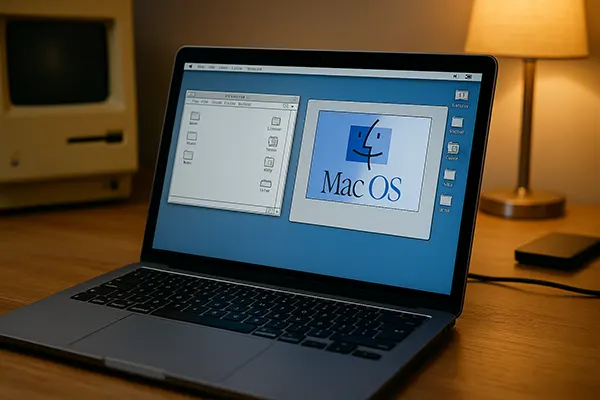Classic Mac Emulation with Basilisk II and SheepShaver

Running classic versions of macOS such as System 7.x through Mac OS 9.x is not only a way to relive computing history but also a practical method for accessing old software. Two of the most notable tools for this are Basilisk II and SheepShaver, which make it possible to emulate Motorola 680×0 and PowerPC environments on modern hardware. As of 2025, both emulators remain relevant for retro-computing enthusiasts, offering updated features and compatibility improvements.
Basilisk II vs SheepShaver: Key Differences
Basilisk II focuses on emulating the 680×0 series processors, enabling users to run early System 7.x to Mac OS 8.1. This emulator is lightweight and relatively simple to configure, making it popular among those who primarily seek stability and compatibility with older Mac software.
SheepShaver, on the other hand, emulates PowerPC processors, allowing it to run Mac OS 7.5.2 through Mac OS 9.0.4. This makes it a stronger option for those who need later-era software or applications built for PowerPC rather than 68k architecture.
Both tools require a copy of a Macintosh ROM image and original system installation files. While this can pose a challenge for beginners, online retro communities provide detailed guidance on obtaining the necessary resources legally and responsibly.
Performance and Compatibility in 2025
On modern Macs, Basilisk II tends to offer higher stability due to its simpler scope, while SheepShaver continues to push emulation further, handling more complex applications. For example, SheepShaver remains the only practical way to run late-90s multimedia and productivity applications in their original environment.
Compatibility varies between software titles, with Basilisk II excelling in running 68k-native applications without major issues. SheepShaver is more demanding, requiring fine-tuning of memory settings, disk images, and sometimes experimental builds to achieve optimal performance.
In 2025, the community continues to maintain both emulators, ensuring they remain compatible with macOS Sonoma and other recent operating systems. The flexibility to run these old systems on current machines highlights their enduring value.
Recent Updates and Improvements
SheepShaver received a significant update in January 2025 (v24012025). This release introduced enhanced ISO disk mounting, providing users with more straightforward access to archived software. In addition, its graphical interface was refined, making configuration more intuitive for newcomers.
The updated GUI allows users to manage multiple virtual machines more easily, offering a level of convenience previously missing. Basilisk II, while updated less frequently, has also seen improvements, mainly in stability and compatibility with modern macOS updates.
Both projects benefit from open-source development, with dedicated communities ensuring bug fixes and incremental improvements. This means that enthusiasts can expect continued support for retro-computing well into the future.
Practical Applications for Retro Users
The improvements in SheepShaver’s ISO handling make it much easier to load software from CD images, a critical feature for anyone looking to access 1990s multimedia or productivity discs. This development reduces reliance on complex workarounds and external tools.
Basilisk II’s stability continues to appeal to those who primarily seek an environment for classic Mac utilities or games that require the 68k architecture. Its lighter system demands also make it a reliable option for older hardware still in use.
For collectors, archivists, or historians, these updates ensure that original software and environments remain accessible, preserving digital culture that might otherwise be lost.

Why Emulation Matters in 2025
As hardware ages, original machines capable of running Mac OS 7–9 are becoming increasingly rare. Emulation provides an accessible way to keep software functional, whether for research, nostalgia, or preservation purposes. The work done by Basilisk II and SheepShaver developers contributes significantly to digital heritage.
These tools are not limited to hobbyists. Educators and museums use them to demonstrate the evolution of computing to new generations. By providing authentic environments, emulators help contextualise how modern systems developed from earlier designs.
In addition, certain legacy file formats still open more reliably in their original software than in modern converters. For researchers and archivists, this makes emulation a practical necessity rather than just a nostalgic pursuit.
Community and Preservation Value
The retro-computing community around Basilisk II and SheepShaver continues to grow, sharing installation guides, ROM resources, and troubleshooting advice. This shared knowledge makes it easier for new users to get started without deep technical expertise.
Preservation organisations also benefit from these projects, ensuring that cultural artefacts of the digital age remain accessible. Without emulation, many applications, games, and documents would risk permanent obsolescence.
Ultimately, the work behind Basilisk II and SheepShaver reflects the value of open-source collaboration, proving that older technologies still have relevance and practical use in 2025.
